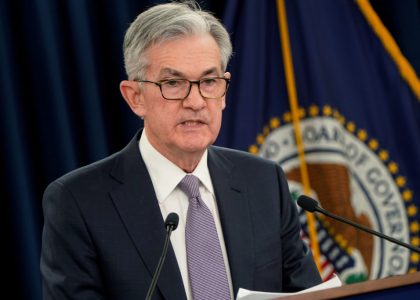Has the commodity rally that began just before the New Year ran its course? We posed the argument in early January that the technical breakout in interest rates would point towards the general economic activity of 2016. The interest rate breakout higher, towards lower rates would ultimately show itself in the form of deflation, which would in turn, weaken the commodity sector. I believe we are at a major inflection point for the year's trading.
 Our thesis through the first quarter was, "buying value." Many commodity markets and the stock indices had become oversold through the end of 2015. In fact, we saw so many commodities at oversold levels that we actually wrote a piece for our clients who use ETF's as well as commodity futures. Our primary definition of value is based on the commercial traders. It's kind of the Warren Buffet strategy. If we can follow the biggest traders and execute at better prices, we should be able to put their leverage on our side. The combination of commercial buying in commodity markets trading at oversold prices put us on the right side early this year as we bought metals, grains and finally, the stock market in late January.
Our thesis through the first quarter was, "buying value." Many commodity markets and the stock indices had become oversold through the end of 2015. In fact, we saw so many commodities at oversold levels that we actually wrote a piece for our clients who use ETF's as well as commodity futures. Our primary definition of value is based on the commercial traders. It's kind of the Warren Buffet strategy. If we can follow the biggest traders and execute at better prices, we should be able to put their leverage on our side. The combination of commercial buying in commodity markets trading at oversold prices put us on the right side early this year as we bought metals, grains and finally, the stock market in late January.
The last month has seen many of the markets roil and bounce rapidly back and forth as they've tried to sort out whether this has been the creation of a new bullish commodity foundation or, whether this is just another upwards blip in the continuing deflationary decline of global economic contraction. The commercial traders have clearly bet on the latter. They've rapidly sold the rallies across nearly the entire commodity spectrum. The only obvious exceptions has been the stock indices.
This paints an interesting picture as their action predicts lower physical commodity prices from their current levels. We agree with this as we've been calling a top in the metal's rally for a week and published a sell signal in crude oil Sunday night. Furthermore, agricultural commodity supplies remain high, from coffee and corn to hogs and sugar. As usual, El Nino hasn't been as devastating as expected and global commodity demand has softened. Therefore, supplies have swelled.
 The contrary indicators in this picture are the interest rate and equity markets. Commercial traders in the interest rate sector are betting heavily on higher rates going forward, which bring up to obvious points. First, if interest rates are headed higher, that's inflationary and good for commodities. Second, if interest rates are headed higher, that makes doing business more expensive and equities should weaken. The question remains, "How do we reconcile these opposing views from within the same trading group?" Our answer is to take opportunities as they present themselves. The markets rarely move in sync. Our plan is to try and catch the fits and starts as they present themselves, regardless of the market. Furthermore, we find the mechanical approach to trading works far better when the markets, "don't make sense." It's been our experience that this is exactly when a mechanical program can trigger a trade that argues against everything in our economic brains and ends up being the best of the year.
The contrary indicators in this picture are the interest rate and equity markets. Commercial traders in the interest rate sector are betting heavily on higher rates going forward, which bring up to obvious points. First, if interest rates are headed higher, that's inflationary and good for commodities. Second, if interest rates are headed higher, that makes doing business more expensive and equities should weaken. The question remains, "How do we reconcile these opposing views from within the same trading group?" Our answer is to take opportunities as they present themselves. The markets rarely move in sync. Our plan is to try and catch the fits and starts as they present themselves, regardless of the market. Furthermore, we find the mechanical approach to trading works far better when the markets, "don't make sense." It's been our experience that this is exactly when a mechanical program can trigger a trade that argues against everything in our economic brains and ends up being the best of the year.
Our Commitment of Traders analysis is the primary screen upon which we base our trading decisions. We only take trades inline with the commercial traders. Given the opposing market views, we'll probably not get both sides of this trade right. The idea in all of trading is to cap the losses and ride the winners and that is exactly our intention. We'll soon see if the commodity producers have been correct in hedging their forward production and/or whether the all-time low in interest rates has already been printed.





